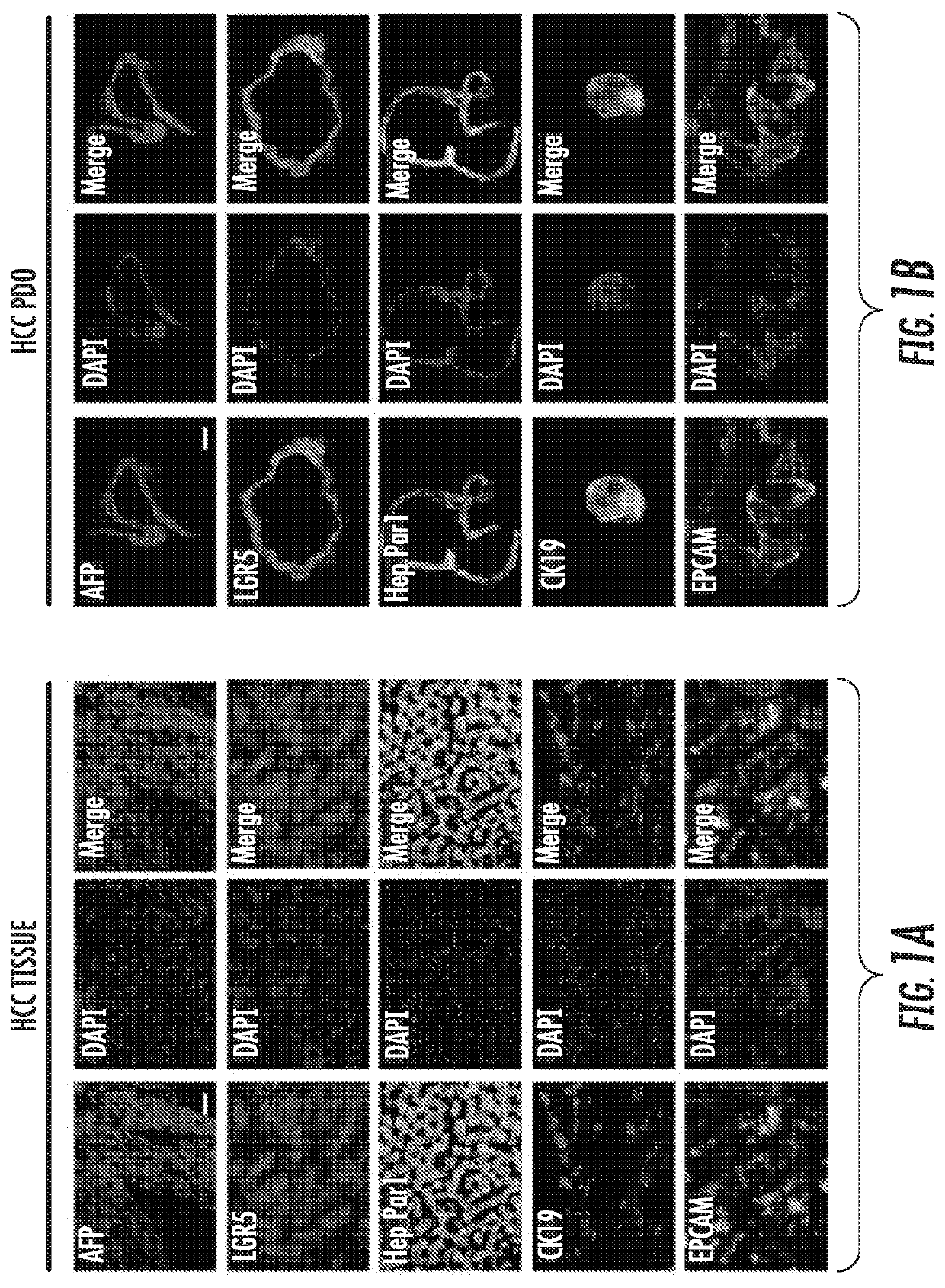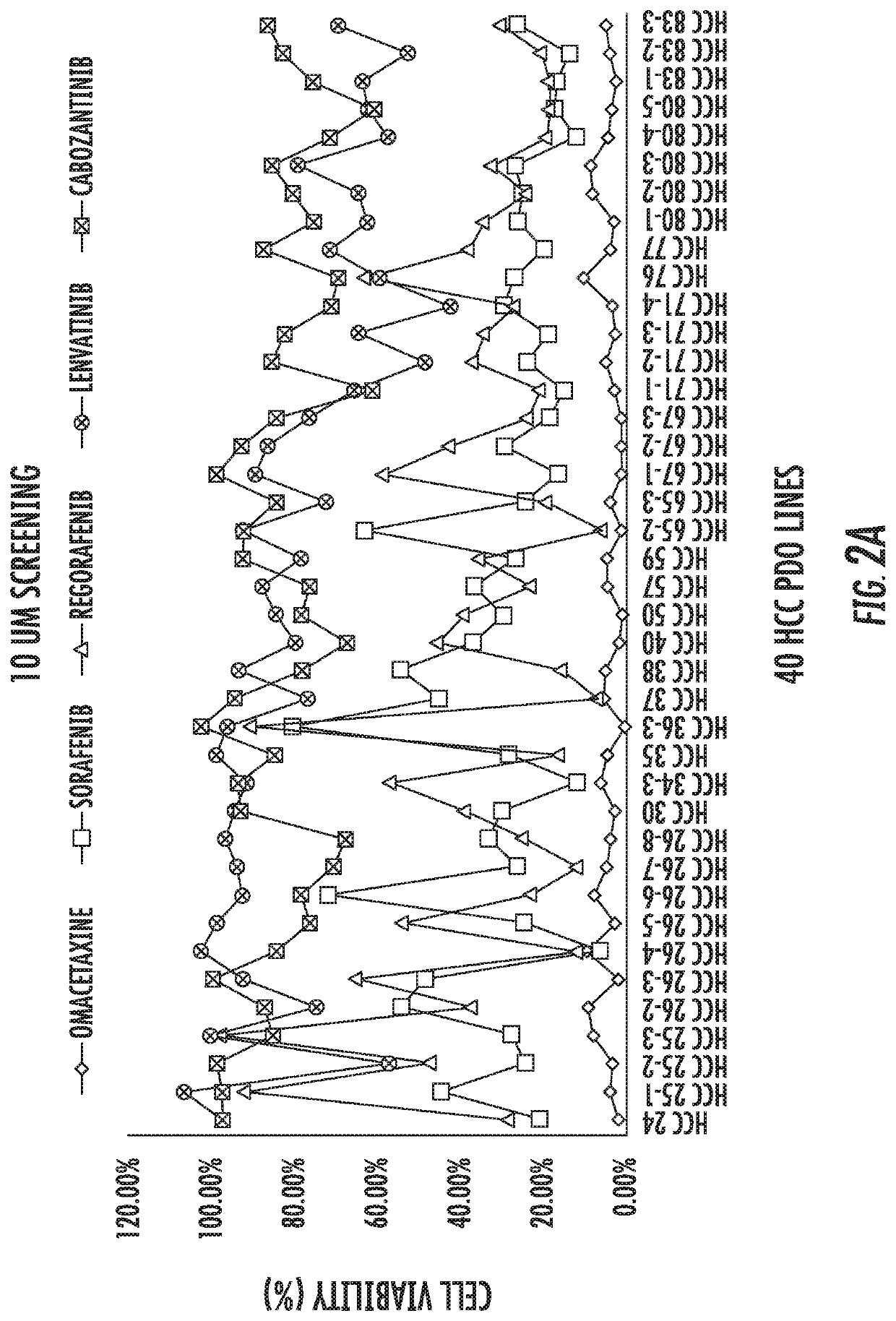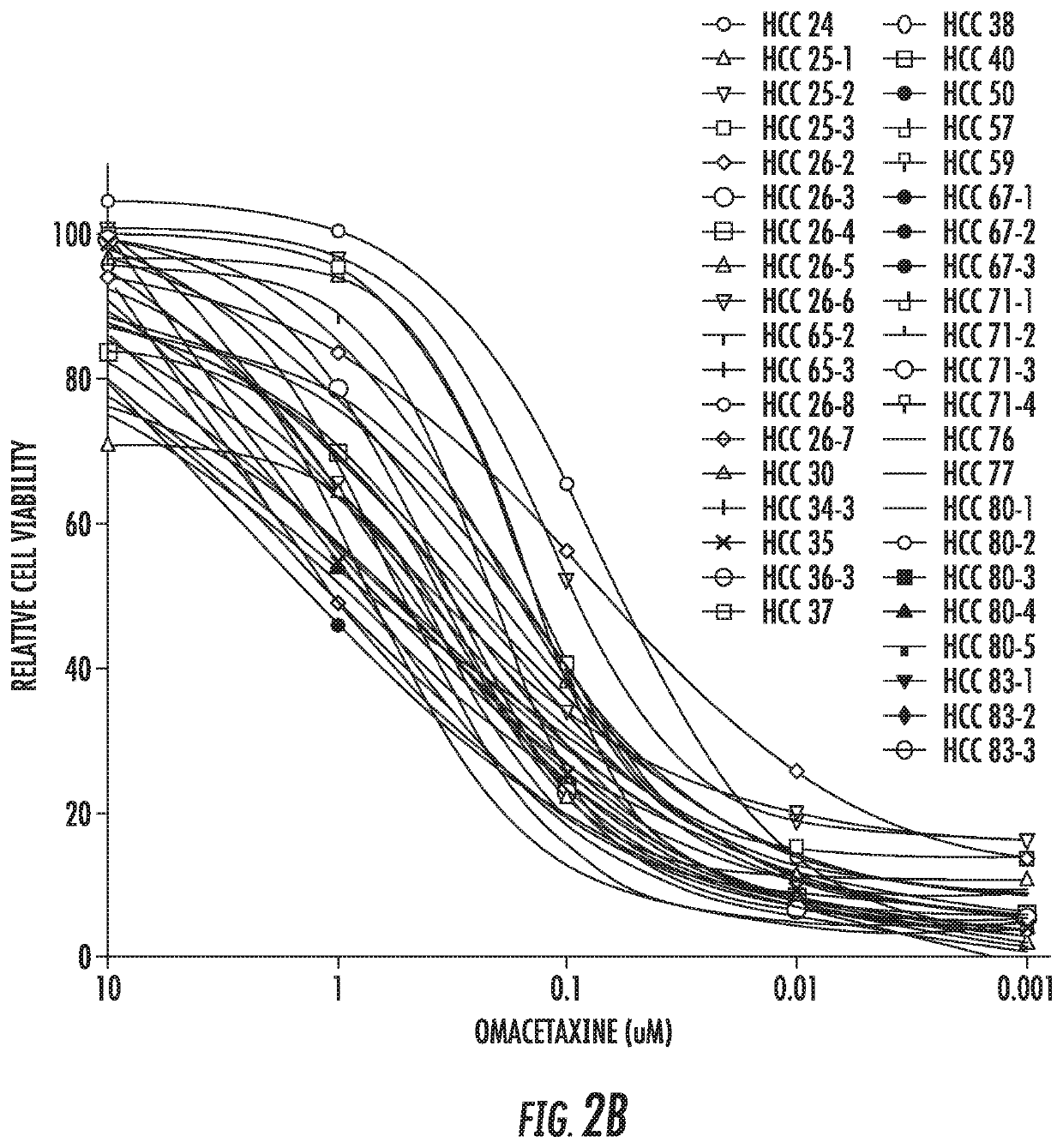Compositions and methods of treating liver cancers
a technology of liver cancer and compositions, applied in drug compositions, heterocyclic compound active ingredients, anti-inflammatory agents, etc., can solve the problems of poor survival, hcc is the second most lethal cancer, and hcc has a dismal survival of only 18%
- Summary
- Abstract
- Description
- Claims
- Application Information
AI Technical Summary
Benefits of technology
Problems solved by technology
Method used
Image
Examples
example 1
[0097]Drug Screening Identifies Omacetaxine as a Putative Anti-HCC Agent.
[0098]After successful establishment of the 40 HCC PDO lines from 20 HCC patients, the inventors performed drug screening with a panel of 129 anti-cancer drugs, similar to our published data13. As readout of drug effectiveness, cell viability at 96 hours (h) was measured. White light microscopy images of one of the HCC PDO lines across 129 drugs was prepared. In FIG. 2E, each panel represents the image collected at 96 hours after treatment with each drug, at a concentration of 10 μM. As seen in the figure, certain drugs, such as bortezomib, induce cell destruction while others, such as sorafenib, allow unrestricted organoid growth. To quantify survival, we implemented CellTiter-Glo, a luminescent cell viability assay. A total of 129 readings (one for each drug) was obtained for each of the 40 PDO lines, for a total of 4,644 data points. For each individual HCC PDO, drugs that inhibited the growth by ≥50% at 96 ...
example 2
[0099]Omacetaxine is Effective at Nanomolar Concentrations in HCC In Vitro.
[0100]The inventors tested omacetaxine at decreasing concentrations (10 μM, 1 μM, 100 nM, 10 nM and 1 nM) to calculate the half-maximal inhibitory concentration (IC50). As shown in FIG. 2C, and further validating the present assay, omacetaxine displays dose response (decreasing concentrations result in less dead cells—red in the figure—and more live cells—green in the figure). FIG. 2B displays the IC50 curves for each of the 40 HCC PDOs. While there was variability noted—which is to be expected as an expression of functional heterogeneity—the curves demonstrate that all 40 HCC PDOs are sensitive to omacetaxine at nanomolar concentrations. The calculated average IC50 across all 40 HCC PDO lines was 35.2 nM. The IC50 value for each of the 40 HCC PDO lines can be found in Table 2. FIG. 2D displays the values for each of the HCC PDO lines.
TABLE 2IC50 of 40 PDO lines from 20 HCC patients.PDO linesHCC 24HCC 25-1HCC...
example 3
[0102]Omacetaxine Represses Growth and Increases Apoptosis in HCC PDOs.
[0103]The effects on proliferation were assessed to elucidate the omacetaxine mechanisms of action. FACS analysis of bromodeoxyuridine (BrdU) incorporation demonstrated that omacetaxine inhibited incorporation of this synthetic nucleoside in newly synthetized DNA during the S phase. By extension, the implication is that omacetaxine inhibits cancer cell proliferation in each of the 6 HCC PDO lines tested (FIGS. 3A and 3C). To further understand the effects of omacetaxine on cancer cell proliferation and cell cycle, the inventors performed FACS analysis of Ki67 protein. Ki-67 is a nuclear protein expressed in proliferating cells (in all phases of the cell cycle except G0)22,23. Furthermore, the higher expression of Ki67 has been linked to poorer disease free survival and overall survival in HCC24. As shown in FIGS. 3B and 3D, omacetaxine reduces the expression of Ki67 in all 6 HCC PDO lines tested. Next, the invent...
PUM
| Property | Measurement | Unit |
|---|---|---|
| Chemotherapeutic properties | aaaaa | aaaaa |
Abstract
Description
Claims
Application Information
 Login to View More
Login to View More - R&D
- Intellectual Property
- Life Sciences
- Materials
- Tech Scout
- Unparalleled Data Quality
- Higher Quality Content
- 60% Fewer Hallucinations
Browse by: Latest US Patents, China's latest patents, Technical Efficacy Thesaurus, Application Domain, Technology Topic, Popular Technical Reports.
© 2025 PatSnap. All rights reserved.Legal|Privacy policy|Modern Slavery Act Transparency Statement|Sitemap|About US| Contact US: help@patsnap.com



